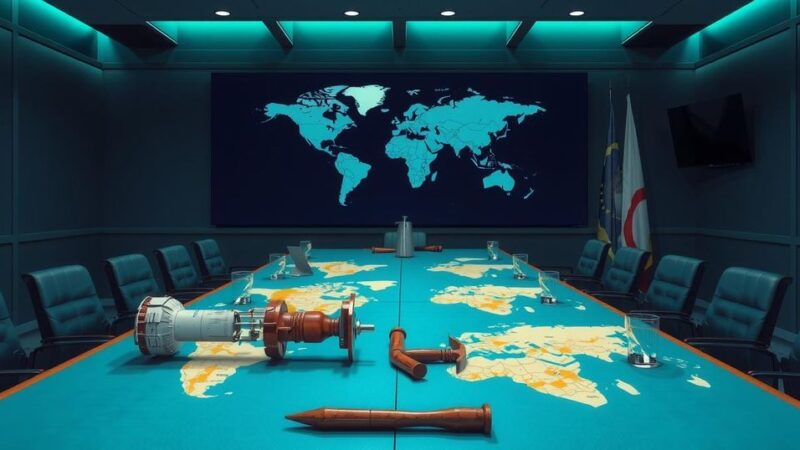The future of the Gaza truce is uncertain as Israeli troops prepare to withdraw from the Philadelphi Corridor, a strategic border area. This move is significant for ongoing negotiations between Israel and Hamas. While both parties seek to avoid renewed conflict, achieving a comprehensive peace agreement appears challenging due to fundamental differences in their positions.
The potential future of the Gaza truce hinges on developments along the Philadelphi Corridor, a strategic border zone between Gaza and Egypt. As the cease-fire’s initial phase concludes this weekend, Israeli troops are scheduled to begin their withdrawal from this sensitive area, a move that could significantly impact ongoing peace negotiations. Prime Minister Benjamin Netanyahu has labeled control over this corridor as a key national security concern, creating apprehension regarding the withdrawal process.
The Philadelphi Corridor, an eight-mile expanse separating Gaza from Egypt, has been pivotal in cease-fire discussions. Established by the 1979 Egypt-Israel peace treaty, the corridor runs through Rafah and has been under Hamas control since their takeover in 2007. Israeli officials accuse Hamas of using this border to smuggle arms, with Netanyahu previously stating it serves as “Hamas’s oxygen valve.”
This week, Israeli negotiators are engaged in discussions in Cairo alongside Egyptian and Qatari mediators, while Hamas representatives met recently in the same city. The cease-fire agreement stipulates that Israeli forces should withdraw from the Philadelphi Corridor within the first six weeks of the truce, coinciding with the end of its initial phase.
The planned evacuation from the corridor is essential, as a power vacuum could potentially be filled by Hamas. Despite the ongoing truce, concerns about another cycle of violence persist, as both parties weigh the implications of any actions taken. Israel’s withdrawal from the corridor aligns with its commitment to conclude the truce on a constructive note.
However, uncertainties remain regarding Israel’s actual compliance with the withdrawal agreement. Failure to adhere could further complicate an already fragile cease-fire and render future negotiations more challenging. Both Israel and Hamas exhibit a tentative desire to avoid renewed conflict for the time being, but achieving a comprehensive peace agreement appears distant due to fundamental disagreements.
In conclusion, the Gaza truce’s future is intricately linked to the situation along the Philadelphi Corridor as Israel prepares for troop withdrawal. This strategic area has considerable implications for both national security and ongoing negotiations. While both sides currently aim to avoid escalation, the path to a thorough and lasting peace agreement remains tenuous owing to deep-seated differences over critical issues.
Original Source: www.nytimes.com






